The city of Savannah, Province of Georgia, was laid out in 1733, in what was colonial America, around four open squares, each surrounded by four residential "tithing") blocks and four civic ("trust") blocks. The layout of a square and eight surrounding blocks was known as a "ward." The original plan was part of a larger regional plan that included gardens, farms, and "outlying villages." Once the four wards were developed in the mid-1730s, two additional wards were laid. Oglethorpe's agrarian balance was abandoned after the Georgia Trustee period. Additional squares were added during the late 18th and 19th centuries, and by 1851 there were 24 squares in the city. In the 20th century, three of the squares were demolished or altered beyond recognition, leaving 21. In 2010, one of the three "lost" squares, Ellis, was reclaimed, bringing the total to today's 22.
The Savannah Historic District is a large urban U.S. historic district that roughly corresponds to the city limits of Savannah, Georgia, prior to the American Civil War. The area was declared a National Historic Landmark District in 1966, and is one of the largest districts of its kind in the United States. The district was made in recognition of the unique layout of the city, begun by James Oglethorpe at the city's founding in 1733 and propagated for over the first century of its growth.

The Oliver Sturges House is a historic building in Savannah, Georgia, United States, built in 1813. It is located in the southwestern trust block of Reynolds Square, and it was placed on the National Register of Historic Places in 1971. The building has also been known as the Hiram Roberts House. Roberts lived from 1806 to 1880. The house was originally two floors; a third was added in 1835.
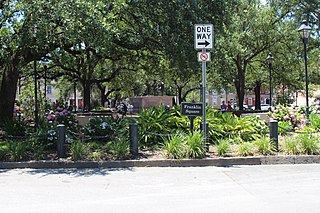
Franklin Square is one of the 22 squares of Savannah, Georgia, United States. It is located in the northernmost row of the city's five rows of squares, at Montgomery Street and West St. Julian Street. It is west of Ellis Square in the northwestern corner of the city's grid of squares. The square now anchors the western end of the City Market retail area.

Johnson Square is one of the 22 squares of Savannah, Georgia, United States. Located in the northernmost row of the city's five rows of squares, it was the first of the squares to be laid out, in 1733, and remains the largest of the 22. It is east of Ellis Square, west of Reynolds Square and north of Wright Square. Situated on Bull Street and St. Julian Street, it is named for Robert Johnson, colonial governor of South Carolina and a friend of General James Oglethorpe. The oldest building on the square is the Ann Hamilton House, at 26 East Bryan Street, which dates to 1824.

Warren Square is one of the 22 squares of Savannah, Georgia, United States. It is located in the northernmost row of the city's five rows of squares, on Habersham Street and East St. Julian Street. It is east of Reynolds Square, west of Washington Square and north of Columbia Square. The oldest building on the square is the Spencer–Woodbridge House, at 22 Habersham Street, which dates to 1790. The Lincoln Street Parking Garage occupies the entire western side of the square.
Washington Square is one of the 22 squares of Savannah, Georgia, United States. It is located in the northernmost row of the city's five rows of squares, on Houston Street and East St. Julian Street. It is east of Warren Square and north of Greene Square in the northeastern corner of the city's grid of squares, in Savannah's Old Fort neighborhood. The oldest building original to the square is 510 East St. Julian Street, which dates to 1797.
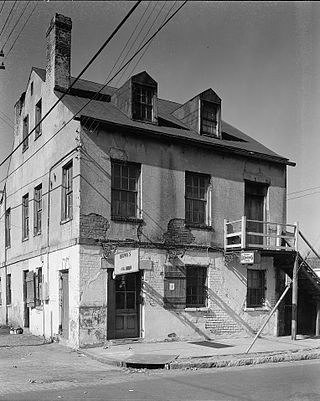
Crawford Square is one of the 22 squares of Savannah, Georgia, United States. It is located in the middle row of the city's five rows of squares, on Houston Street and East McDonough Street, and was laid out in 1841. It is south of Greene Square and east of Colonial Park Cemetery on the eastern edge of the Savannah Historic District. The oldest building on the square is at 224 Houston Street, which dates to 1850.
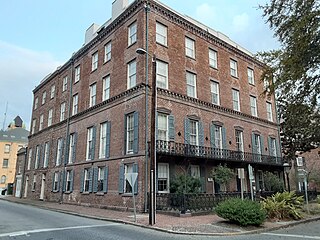
The Mary Marshall Houses is a duplex building in Savannah, Georgia, United States. It is located in the southwestern civic block of Oglethorpe Square and was built in the 1840s as rental property for Mary Marshall. It is part of the Savannah Historic District.

The Spencer–Woodbridge House is a home in Savannah, Georgia, United States. It is located in the northeastern civic block of Warren Square and was built in 1790, making it the oldest building on the square and one of the oldest in Savannah overall. It is part of the Savannah Historic District, and was built for George Basil Spencer, though he died in February 1791. It also became the homes of William H. Spencer until 1817 and William Woodbridge, who bought it from Spencer. It remained in the Woodbridge family until 1911.
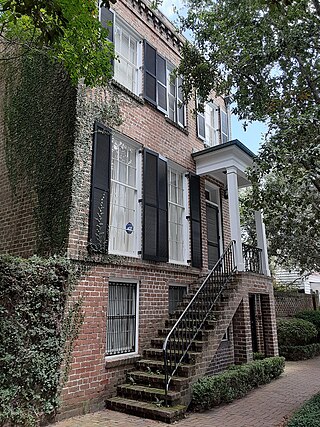
The Margaret Pendergast House is a home in Savannah, Georgia, United States. It is located in the northeastern civic block of Warren Square, and was built by 1868. It is part of the Savannah Historic District, and was built for Margaret Pendergast. The home is a three-storey brick structure.

The Joe Odom House is a home in Savannah, Georgia, United States. It is located at 16 East Jones Street and was constructed in 1847.
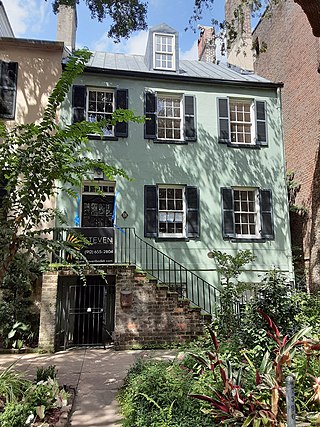
The Eliza Ann Jewett Property is a home in Savannah, Georgia, United States. It is located at 18 East Jones Street and was constructed in 1847.

The Thomas–Levy House is a historic building in Savannah, Georgia, United States. It comprises the western half of a Second Empire baroque townhouse known as the Thomas–Purse Duplex, located in the northeastern residential block of Monterey Square. It was built in 1869 for Daniel Remshart Thomas, and is part of the Savannah Historic District. Meanwhile, Savannah's Historic Preservation Commission's definition of “exceptional importance” refers to structures built outside of 1870–1923.

Abraham Minis was an American merchant, prominent in Savannah, Georgia, in the 19th century.
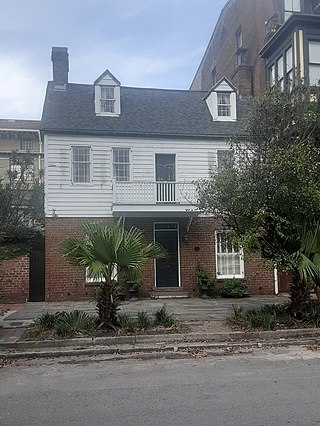
The Christian Camphor Cottage is a home located at 122 East Oglethorpe Avenue in Savannah, Georgia, United States. It is believed to be the oldest extant structure in the city, dating to around 1764. It is part of the Savannah Historic District, and in a survey for Historic Savannah Foundation, Mary Lane Morrison found the building to be of significant status.
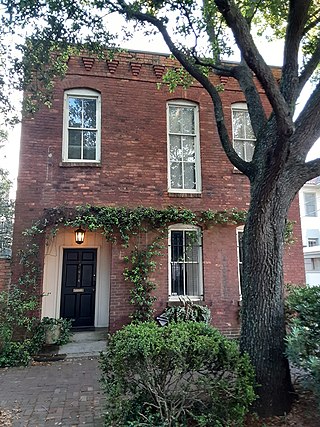
Tattnall Street is a prominent street in Savannah, Georgia, United States. Located between Jefferson Street to the west and Barnard Street to the east, it runs for about 0.53 miles (0.85 km) from West Liberty Street in the north to West Gwinnett Street in the south. It passes through the Savannah Historic District, a National Historic Landmark District.

The Eppinger House is a building located at 110 East Oglethorpe Avenue in Savannah, Georgia, United States. It is believed to be the oldest intact brick structure in Georgia, dating to or before 1776. In a survey for Historic Savannah Foundation, Mary Lane Morrison found the building to be of significant status. Originally two storeys, built by John Eppinger Sr., its upper level was added in 1876.

The Abram Minis Building is a historic building in Savannah, Georgia, United States. Located in the northeastern trust block of Franklin Square, at 317 West Bryan Street and 20–22 Montgomery Street, it dates to 1846, making it the oldest extant building on the square. It was built as a commercial property for 26-year-old Abraham Minis, a prominent merchant of the city and founder of A. Minis & Sons.
510 East St. Julian Street, also known as the Odingsells House, is a building in Savannah, Georgia, United States. It is located in the northwestern civic block of Washington Square and was built in 1797. Built as a home for Major Charles Odingsells, a native of South Carolina, it is now part of the Savannah Historic District and is the oldest building in Washington Square.
















